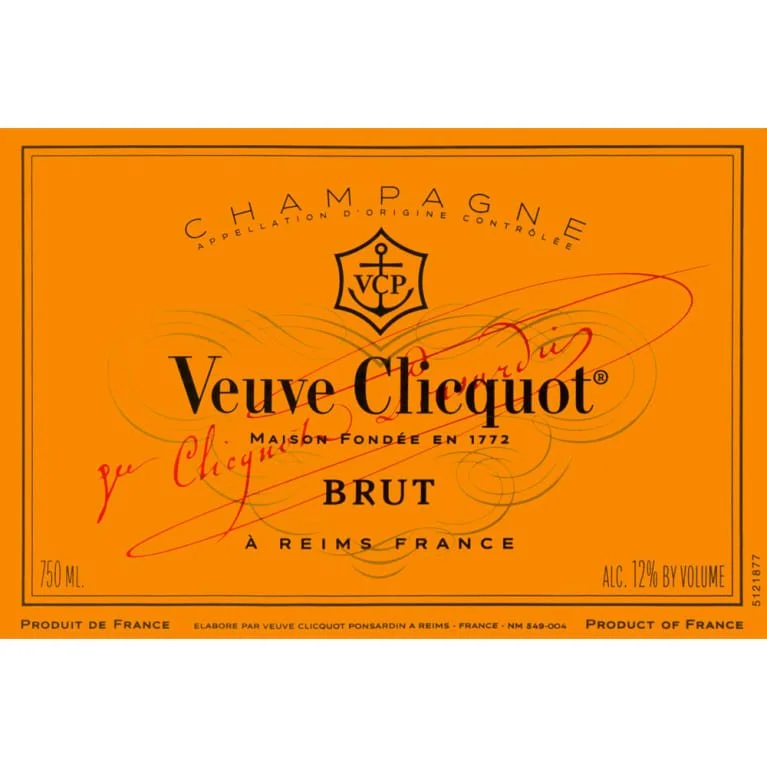Veuve Clicquot Yellow Label
Blend
50% Pinot Noir, 30% Chardonnay and 20% Pinot Meunier
Geographical Attributes
Associated with luxury, celebration, and romance, the region, Champagne, is home to the world’s most prized sparkling wine. In order to bear the label, ‘Champagne’, a sparkling wine must originate from this northeastern region of France—called Champagne—and adhere to strict quality standards. Made up of the three towns Reims, Épernay, and Aÿ, it was here that the traditional method of sparkling wine production was both invented and perfected, birthing a winemaking technique as well as a flavor profile that is now emulated worldwide. Well-drained, limestone and chalky soil defines much of the region, which lend a mineral component to its wines. Champagne’s cold, continental climate promotes ample acidity in its grapes but weather differences from year to year can create significant variation between vintages. While vintage Champagnes are produced in exceptional years, non-vintage cuvées are produced annually from a blend of several years in order to produce Champagnes that maintain a consistent house style. With nearly negligible exceptions, . These can be blended together or bottled as individual varietal Champagnes, depending on the final style of wine desired. Chardonnay, the only white variety, contributes freshness, elegance, lively acidity and notes of citrus, orchard fruit and white flowers. Pinot Noir and its relative Pinot Meunier, provide the backbone to many blends, adding structure, body and supple red fruit flavors. Wines with a large proportion of Pinot Meunier will be ready to drink earlier, while Pinot Noir contributes to longevity. Whether it is white or rosé, most Champagne is made from a blend of red and white grapes—and uniquely, rosé is often produce by blending together red and white wine. A Champagne made exclusively from Chardonnay will be labeled as ‘blanc de blancs,’ while ones comprised of only red grapes are called ‘blanc de noirs.’
Vintner Notes
Veuve Clicquot Yellow Label is the signature champagne of the House. Dominated by Pinot Noir, it offers a perfect balance of structure and finesse. First, Veuve Clicquot Yellow Label looks beautiful: golden-yellow, with a foaming necklace of tiny bubbles. Next it is so pleasing to the nose: initially reminiscent of yellow and white fruits, then of vanilla and later of brioche. Note the fine balance between the fruity aromas coming from the grape varieties and the toasty aromas, the result of the three years of bottle aging. The first sip delivers all the freshness and strength so typical of Veuve Clicquot Yellow Label with a symphony of fruit tastes following (pear, lemon). Here is a true member of the Brut family, well structured, admirably vinous. The lingering aromas echo and re-echo, with each fruit or almond notes distinct. Veuve Clicquot Yellow Label manages to reconcile two opposing factors - strength and silkiness - and to hold them in perfect balance with aromatic intensity and a lot of freshness. This consistent power to please makes it ideal as an apéritif, and perfect as the champagne to enjoy with a meal.



